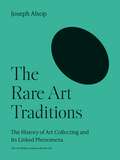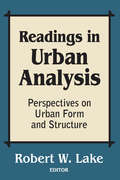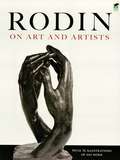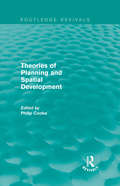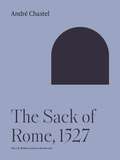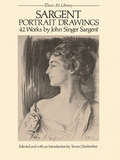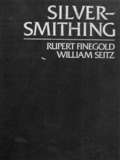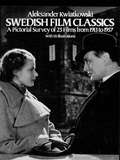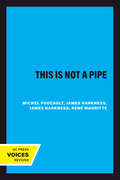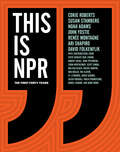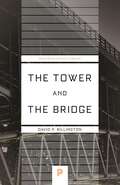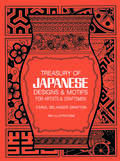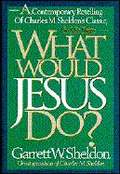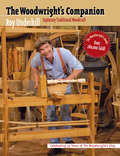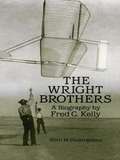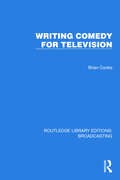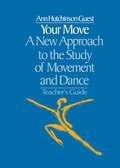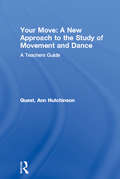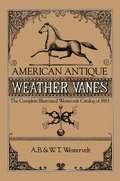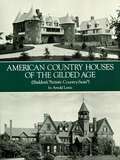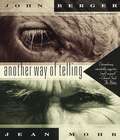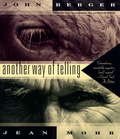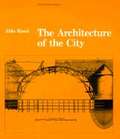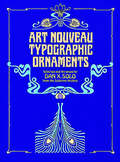- Table View
- List View
The Rare Art Traditions: The History of Art Collecting and Its Linked Phenomena (The A. W. Mellon Lectures in the Fine Arts #27)
by Joseph AlsopA cultural and social history of art collecting, art history, and the art marketIn The Rare Art Traditions, Joseph Alsop offers a wide-ranging cultural and social history of art collecting, art history, and the art market. He argues that art collecting is the basic element in a remarkably complex and historically rare behavioral system, which includes the historical study of art, the market for buying and selling art, museums, forgery, and the astonishing prices commanded by some works of art. The Rare Art Traditions tells the story of three important traditions of art collecting: the classical tradition that began in Greece, the Chinese tradition, and the Western tradition. The result is a major original contribution to art history.
Readings in Urban Analysis: Perspectives on Urban Form and Structure
by Robert W. LakeThis important work brings together a range of perspectives in contemporary urban analysis. The field of urban analysis is characterized by the multiplicity of approaches, philosophies, and methodologies employed in the examination of urban structure and urban problems. This fragmentation of perspectives is not simply a reflection of the multifaceted and complex nature of the city as subject matter. Nor is it a function of the variety of disciplines such as geography, planning, economics, history, and sociology. Cross-cutting all of these issues and allegiances has been the emergence in recent years of a debate on fundamental issues of philosophy, ideology, and basic assumptions underlying the analysis of urban form and structure. The notion of urban analysis Robert W. Lake discusses focuses on the spatial structure of the city, its causes, and its consequences. At issue is the city as a spatial fact: a built environment with explicit characteristics and spatial dimensions, a spatial distribution of population and land uses, a nexus of locational decisions, an interconnected system of locational advantages and disadvantages, amenities and dis-amenities. Beginning with landmark articles in neo-classical and ecological theory, the reader covers the latest departures and developments. Separate sections cover political approaches to locational conflict, institutional influences on urban form, and recent Marxist approaches to urban analysis. Among the topics included are community strategies in locational conflict, the political economy of place, the role of government and the courts, institutional influences in the housing market, and the relationship between urban form and capitalist development. This is a valuable introductory text for courses in urban planning, urban geography, and urban sociology.
Rodin on Art and Artists
by Auguste RodinThe greatest sculptor of the nineteenth century discusses his philosophy of life with a close friend in this fascinating and informative artistic testament. Auguste Rodin spoke candidly to his protégé, Paul Gsell, who recorded the master's thoughts not only about the technical secrets of his craft, but also about its aesthetic and philosophical underpinnings.Here is the real Rodin--relaxed, intimate, open, and charming--offering a wealth of observations on the relationship of sculpture to poetry, painting, theater, and music. He also makes perceptive comments on Rembrandt, Michelangelo, Raphael, and other great artists, and he shares revealing anecdotes about Hugo, Balzac, and others who posed for him. Seventy-six superb illustrations of the sculptor's works complement the text, including St John the Baptist Preaching, The Burghers of Calais, The Thinker, and many others, along with a selection of exuberant drawings and prints.
Routledge Revivals: Theories of Planning and Spatial Development (Routledge Revivals)
by Philip CookeFirst published in 1983, this book attempts to unify two bodies of theory which had become severely disjointed. Theories of the planning process had become detached from those of the urban and regional processes which are the subject of planning intervention. The author argues that major weaknesses of planning intervention in cities and regions have resulted from this split, and shows how it is possible to develop an integrated theory of the relationship between planning and spatial development. The mechanism which helps to unify the two fields is the division of labour. This poses problems for the planning system as its spatial requirements change but it depends upon the state planning framework in order to overcome those obstacles — hindering its capacity for spatial reorganisation. This book offers a thorough analysis of these obstacles and requirements by references to contemporaneous theoretical advances in the study of the development process, the state (especially at sub-national level), and the labour market. It is argued that the way capital makes use of urban and regional space can be explained by using the theoretical framework which is developed and, on this basis, point to certain innovative ways in which the processes underlying urban and regional de-industrialisation may be countered.
The Sack of Rome, 1527 (The A. W. Mellon Lectures in the Fine Arts #26)
by André ChastelFrom a leading art historian of Renaissance Italy, a compelling account of the artistic and cultural impact of the sack of sixteenth-century RomeIn this illustrated account of the sack of Rome as a cultural and artistic phenomenon, André Chastel reveals the historical ambiguities of preceding events and the traumatic contrast between the flourishing world of art under Pope Clement VII and the city after it was looted by the troops of Emperor Charles V in 1527. Chastel illuminates the cultural repercussions of the humiliation of Rome, emphasizing the spread or “Europeanization” of the Mannerist style by artists who fled the city—including Parmigianino, Rosso, Polidoro, Peruzzi, and Perino del Vaga. At the same time, Clement’s critics used the new media of printing and engraving to win over the people with caricatures and satirical writings, while Rome responded with monumental works affirming the legitimacy of the pope’s temporal power. Chastel explores both the world that was lost by the sack and the great works of art created during Rome’s recovery.
Sargent Portrait Drawings: 42 Works
by John Singer SargentPortraiture is a demanding art requiring the artist to capture a likeness and render it revealing some hint of the personality behind the image. A two-pronged task, it requires great technical skill and an intuitive eye. In both these respects, John Singer Sargent stands out as a portrait artist of major stature.Born in 1856 in Florence of American parents, Sargent showed artistic aptitude at an early age and was enrolled at the Academia delle Belle Arti in that city. Later he studied with Parisian artist Carolus Duran, acquiring the loose, painterly style for which he is renowned. International acclaim as a portrait artist came early in his life and followed him throughout his career.Sargent's portraits done in oil are well known; they appear in major museums throughout the world. A lesser-known but no less respected aspect of his oeuvre, his portrait drawings are the focus of this collection. Included here are early works in pencil and pastels, and later renderings in charcoal, a medium Sargent favored after 1910. They have been selected from both public and private collections by art historian Trevor J. Fairbrother and attest to Sargent's technical skill, versatility, and dexterity in three different mediums.In addition, these works reveal Sargent's ability to treat a diverse group of subjects; he handles the languorous beauties of the Edwardian age, members of the aristocracy, and the great literary and artistic figures of his day with equal virtuosity, capturing their characteristic mood and style. This collection includes portraits of Lord and Lady Spencer, Henry James, William Butler Yeats, Vaslav Nijimsky, Tamara Karsavina, Dame Ethel Smyth, and Jascha Heifetz.Artists, students, historians, and lovers of portraiture will appreciate this selection of drawings by Sargent. Anyone interested in trying his hand at portraiture will find this volume both instructional and inspirational.
Silversmithing
by Rupert Finegold William SeitzThe best book on the market that covers text on smithing, including the general principles of metalwork, types and properties of metals, tools, and techniques. Numerous diagrams, photos and illustrations enhance this in-depth, how-to book on silversmithing.
Swedish Film Classics
by A. KwiatkowskiMemorable stills from great cinematic tradition -- Ingeborg Holm (1913) to Wild Strawberries (1957). Complete credits, synopsis, commentary for each film. Introduction, critical biographies of directors.
This Is Not a Pipe (Quantum Books #24)
by Michel FoucaultWhat does it mean to write "This is not a pipe" across a bluntly literal painting of a pipe? René Magritte's famous canvas provides the starting point for a delightful homage by French philosopher and historian Michel Foucault. Much better known for his incisive and mordant explorations of power and social exclusion, Foucault here assumes a more playful stance. By exploring the nuances and ambiguities of Magritte's visual critique of language, he finds the painter less removed than previously thought from the pioneers of modern abstraction.
This Is NPR: The First Forty Years
by Noah Adams Cokie Roberts David Folkenflik Susan Stamberg Ari Shapiro John Ydstie Renee MontagneAlways put the listener first has been NPR's mantra since its inception in 1970. Now celebrating its 40th anniversary, NPR's programming attracts over 27 million listeners every week. This beautifully designed volume chronicles NPR's storied history, featuring dozens of behind-the-scenes photos, essays and original reporting by a who's who of NPR staff and correspondents, transcripts of memorable interviews, and an audio CD of the most memorable programming throughout the decades. Beyond an entertaining and inspiring tribute to NPR's remarkable history, this book is an intimate look at the news and stories that have shaped our world, from the people who were on the ground and on the air. With contributions from Steve Inskeep, Neal Conan, Robert Siegel, Nina Totenberg, Linda Wertheimer, Scott Simon, Melissa Block, P.J. O'Rourke, David Sedaris, Sylvia Poggioli, and many more, this is the perfect book for any NPR supporter, fan, or devotee.
The Tower and the Bridge: The New Art of Structural Engineering (Princeton Science Library #130)
by David P. BillingtonAn essential exploration of the engineering aesthetics of celebrated structures from long-span bridges to high-rise buildingsWhat do structures such as the Eiffel Tower, the Brooklyn Bridge, and the concrete roofs of Pier Luigi Nervi have in common? According to The Tower and the Bridge, all are striking examples of structural art, an exciting area distinct from either architecture or machine design. Aided by stunning photographs, David Billington discusses the technical concerns and artistic principles underpinning the well-known projects of leading structural engineer-artists, including Othmar Ammann, Félix Candela, Gustave Eiffel, Fazlur Khan, Robert Maillart, John Roebling, and many others. A classic work, The Tower and the Bridge introduces readers to the fundamental aesthetics of engineering.
Treasury of Japanese Designs and Motifs for Artists and Craftsmen (Dover Pictorial Archive)
by Carol Belanger GraftonA profound sense of the aesthetic beauty in all things pervades the whole of Japanese culture, finding perhaps its clearest expression in the decorative, applied, and pictorial arts. Characterized by a mastery of line and composition, and noted for lyrical scenes of exquisite beauty, the genius of Japanese art has bequeathed to the world a remarkable and distinctive design legacy. This exceptionally versatile collection of traditional Japanese designs and motifs presents the working artist with a treasury of 360 copyright-free designs. All have been especially adapted by noted artist Carol Belanger Grafton for ready use by illustrators, designers, and craftspeople. Painstaking effort has been made to preserve the original spirit and subtlety of detail while simultaneously sharpening the lines and enhancing the reproducibility of the designs and motifs. There are several lovely ceramic and textile patterns. However, most of the design motifs in this compendium were taken from woodblock prints. This particular medium was invented in China and introduced to Japan before 1000 A.D., flourishing thereafter and reaching its zenith in the Ukiyo-e ("floating world") school of the 17th, 18th, and 19th centuries. Accompanying these depictions of people in traditional garb, and accessories such as fans, keys, kites, and umbrellas, are many charmingly decorative family crests arranged in mostly circular configurations. Also included are full-page compositions of bold geometric design, vignettes of ethereal delicacy, as well as a generous sampling of nature's bounty: cherries, radishes, plum blossoms, lions, elephants, dogs, cranes, parrots, turtles, butterflies, even demons and dragons, and much more―often in several arrangements, many with reversed images.Artists, designers, illustrators, students, and teachers will find this indispensable collection of 360 traditional Japanese designs and motifs rendered in clean, crisp, black-and-white, copyright-free illustrations to be a remarkably fertile source of illustrative inspiration and design solutions.
What Would Jesus Do?
by Garrett W. SheldonA smart young pastor. A friendly, growing congregation. Great music. Stirring worship services. And, of course, a host of expanding church programs. It felt comfortable, and it looked perfect - until the day a younghomeless woman cried out for help. Spurred by her tragic plea, Ashton suddenly comes face to face with perhaps the ultimate question for any Christian - what would Jesus do? What would He do at a college, the airport and the local TV station? How would He leat at home and at church? How would He behlp the homeless and other people in need? Soon, a small band of believers pledges to walk "as Jesus would" for one year - and see how God moves in their homes, their church and their community. You can imagine the difference it made in their lives. And better yet, you can learn the difference it can make in yours.
The Woodwright's Companion
by Roy UnderhillWith The Woodwright's Companinon, Roy Underhill continues to demonstrate "how to start with a tree and an axe and make one thing after another until you have a house and everything in it." This volume features chapters on helves and handles, saws, the search for the whetstone quarry, crow chasers and turkey calls, hurdles, whimmy diddles, snaplines and marking gauges, candle stands, planes, window sash, riven shingles, and pit sawing. The final chapter offers a glimpse of traditional woodworking techniques still used by the Colonial Williamsburg housewrights. More than 260 photographs complement the text.
The Wright Brothers: A Biography
by Fred C. KellyIn this fascinating, highly readable biography, Fred C. Kelly, a former newspaperman, author, and an old friend of the Wrights, tells the story of the two brilliant, dedicated, flight-obsessed bicycle mechanics from Ohio who first realized mankind's age-old dream of conquering the skies. Long considered the definitive Wright biography (the manuscript was read and approved by Orville Wright), this book recounts the Wrights' small-town boyhood, their early interest in all things mechanical, the establishment of the Wright Cycle Shop, and the complete behind-the-scenes story of how they designed, built, tested, and flew (December 1903) the first "Flyer."Enhanced with sixteen rare photographs, Mr. Kelly's engaging account avoids minute technical description, yet describes simply and clearly the technological innovations that enabled the two brothers to succeed where so many others had failed. Anyone interested in the mechanics of flight or early aviation will find this volume a splendid introduction to the Wright brothers and their epochal achievement.
Writing Comedy for Television (Routledge Library Editions: Broadcasting #40)
by Brian CookeWriting Comedy for Television (1983) is a practical, step-by-step manual about how and what to write. It contains many examples from the scripts of various sitcoms and sketch shows. It demonstrates how to construct a storyline for a series, how to lay out a sketch, who to pitch to, and how a television comedy is put together.
A Year at the Met
by Patrick J. SmithA study of the Metropolitan Opera presents a behind-the-scenes look at its public, private, artistic, financial, and organizational operations and discusses the traditions, achievements, and innovations of the opera company.
Your Move: A New Approach to the Study of Movement and Dance
by Ann Hutchinson GuestYour Move: A New Approach to the Study of Movement and Dance establishes a fresh and original framework for looking at dance. In examining the basic elements of dance - the Alphabet of Movement - and using illustrations of movement technique and notation symbols it provides a new way to see, to teach and to choreograph dance. This book gives a list of primary actions upon which all physical activity is gased, focusing on both the functional and expressive sides of movement. It draws upon the author's broad experience in ballet, modern and ethnic dance to reinterpret movement and to shed new light on the role of movement in dance. Your Move is an important book not only for dancers but also for instructors in sport and physical therapy. Each copy of Your Move comes complete with exercise sheets, which can also be purchased separately. A teacher's guide has also been designed providing notes on each chapter, approaches to the exploration of movement, interpretation of the reading studies, additional information of motif description and answers to the exercise sheets. An optional audio cassette, with music written and recorded especially for use with the book, is also available.
Your Move: A Teachers Guide
by Ann Hutchinson GuestThe author takes a new approach to teaching notation through movement exercises, thus enlarging the scope of the book to teachers of movement and choreography as well as the traditional dance notation students. Updated and enlarged to reflect the most recent scholarship and through a series of exercises, this book guides students through: movement, stillness, timing, shaping, accents travelling direction, flexion and extension rotations, revolutions and turns supporting balance relationships. All of these movements are related to notation, so the student learns how to notate and describe the movements as they are performed.
American Antique Weather Vanes: The Complete Illustrated Westervelt Catalog of 1883 (Dover Jewelry and Metalwork)
by A. B. WesterveltWeather vanes were used by the ancient Greeks a hundred years before the birth of Christ; by early Scandinavians on their ships; and were common throughout England since William the Conqueror, and throughout Europe since the French Revolution. American vanes were recorded since the seventeenth century -- among the first known is the copper cockerel, made in 1656 for the Dutch Reformed Church at Albany. The weather vane found a welcome home in the expanding America of the eighteenth and nineteenth centuries. It was a jaunty bit of decoration that served an important utilitarian function and enlivened the whole landscape with its humorous and homespun motifs, bold and vigorous design, and spirited air of American individualism and independence.By the late nineteenth century weather vane design and manufacture had reached full maturity. There were several firms throughout the United States specializing in weather vanes, some of which issued catalogs displaying their wares. Among the largest and most important of these companies was A. B. & W. T. Westervelt of New York City, whose extensive illustrated 1883 catalog, featuring over 550 copper weather vanes and finials, is herein reprinted.This excellent primary source by one of the principal manufacturers of American weather vanes offers an extraordinarily wide range of styles and motifs, including: horse with sulky and driver, cow or bull, gun and cap, goddess of liberty, dog, ram or sheep, Indian chief, hook and ladder with number, oxen, ocean steamer, Roman banneret and scroll, rooster, cannon, fish, pen, locomotive and tender, initials, lion, liberty cap and arrows, malter's shovel and brew barrel, and many more. Vanes are illustrated with line engravings, are especially well suited to reproduction (all royalty-free), and are accompanied by relevant information on size, materials, and original prices.Indispensable for the architect, antique collector, and historian, this collection of authentic weather vane designs will also prove to be an unusually rich source of royalty-free art and graphic inspiration for the artist, designer, and crafter.
American Country Houses of the Gilded Age: (Sheldon's "Artistic Country-Seats") (Dover Architecture)
by A. LewisThe "Gilded Age," the three decades following the Civil War, were years of astounding economic growth. Vast empires in oil, shipping, mining, banking, lumber, transportation, and related industries were formed. It was an era in which fortunes were made and lost quickly, almost easily; a period that encouraged - nearly demanded - the public display of this newly acquired wealth, power, and prestige. It was during these heady, turbulent years that a new type of domestic architecture first appeared on the American landscape. Called the "country seat" or "cottage," these houses were grandiose in scale - imposing facades complemented by manicured gardens, with exceptionally large and impressive reception rooms, halls, parlors, dining rooms, and other public areas. Intended exclusively for the very well-to-do, these buildings were designed by some of the finest and most influential architectural firms in America: McKim, Mead & White; Bruce Price; Peabody & Stearns; Theophilus P. Chandler, Jr.; Lamb & Rich; Wilcox & Johnston; and many others. The first, best, and most exquisite documentation of this surge of architectural creativity was the 1886-87 publication of George William Sheldon's Artistic Country-Seats: Types of Recent American Villa and Cottage Architecture with Instances of Country-Club Houses. It presented exceedingly fine photographs, clearly detailed plans and elevations, as well as Sheldon's own commentary for a total of 97 buildings (93 houses and 4 casinos). Most structures were located in new England and the Middle Atlantic states, and embraced the full spectrum of architectural and artistic expressions. This present volume reproduces all of Sheldon's fascinating and historically important photographs and plans, and adds a new, thoroughly accurate text by Arnold Lewis (Professor of Art, the College of Wooster, Wooster, Ohio) that includes the most useful information supplied by Sheldon and also reports on the present condition of each house or casino, providing analyses of elevations and plans, observations about family life in the 1880s, and brief biographical comments about the clients and architects. Sheldon's photographs connect us with a time and style of living that today increasingly seem more the realm of fiction than fact. Yet, in the pages of this important collection, they are brought fresh to life as they appeared when they were new and times were very different.
Another Way of Telling
by John Berger Jean MohrAnother Way of Telling explores the tension between the photographer and the photographed, between the picture and its viewers, between the filmed moment and the memories that it so resembles.
Another Way of Telling (Vintage International)
by John Berger"There are no photographs which can be denied. All photographs have the status of fact. What is to be examined is in what way photography can and cannot give meaning to facts." With these words, two of our most thoughtful and eloquent interrogators of the visual offer a singular meditation on the ambiguities of what is seemingly our straightforward art form. As constructed by John Berger and the renowned Swiss photographer Jean Mohr, that theory includes images as well as words; not only analysis, but anecdote and memoir. Another Way of Telling explores the tension between the photographer and the photographed, between the picture and its viewers, between the filmed moment and the memories that it so resembles. Combining the moral vision of the critic and the pratical engagement of the photgrapher, Berger and Mohr have produced a work that expands the frontiers of criticism first charged by Walter Benjamin, Roland Barthes, and Susan Sontag.
The Architecture of the City
by Aldo Rossi Diane Ghirardo Peter Eisenman Joan OckmanAldo Rossi, a practicing architect and leader of the Italian architectural movement La Tendenza, is also one of the most influential theorists writing today. The Architecture of the City is his major work of architectural and urban theory. In part a protest against functionalism and the Modern Movement, in part an attempt to restore the craft of architecture to its position as the only valid object of architectural study, and in part an analysis of the rules and forms of the city's construction, the book has become immensely popular among architects and design students. An Oppositions Book.
Art Nouveau Typographic Ornaments (Dover Pictorial Archive)
by Dan X. SoloOver 800 Art-Nouveau florals, swirls, women, animals, borders, scrolls, wreaths, spots and dingbats, copyright-free.
